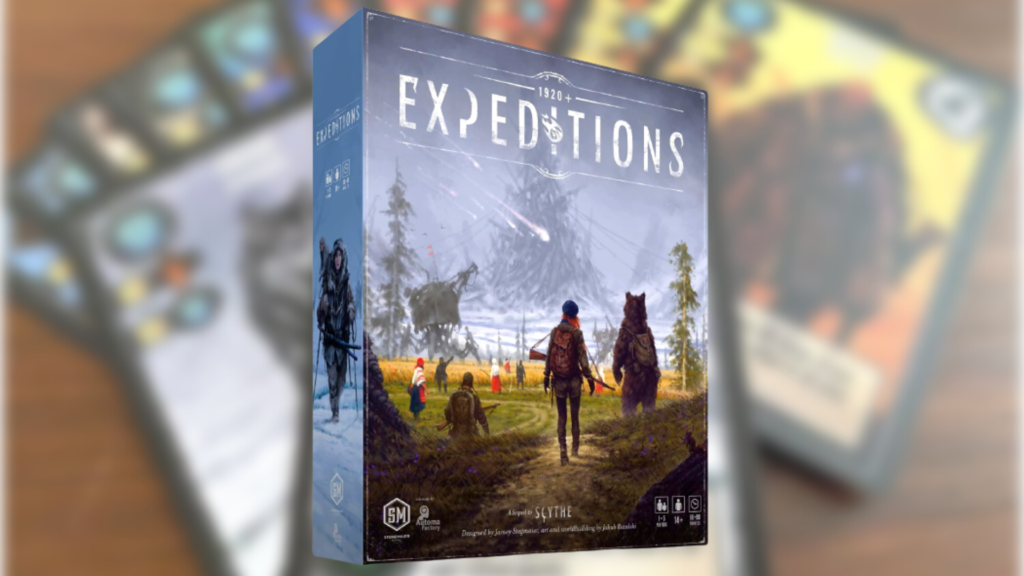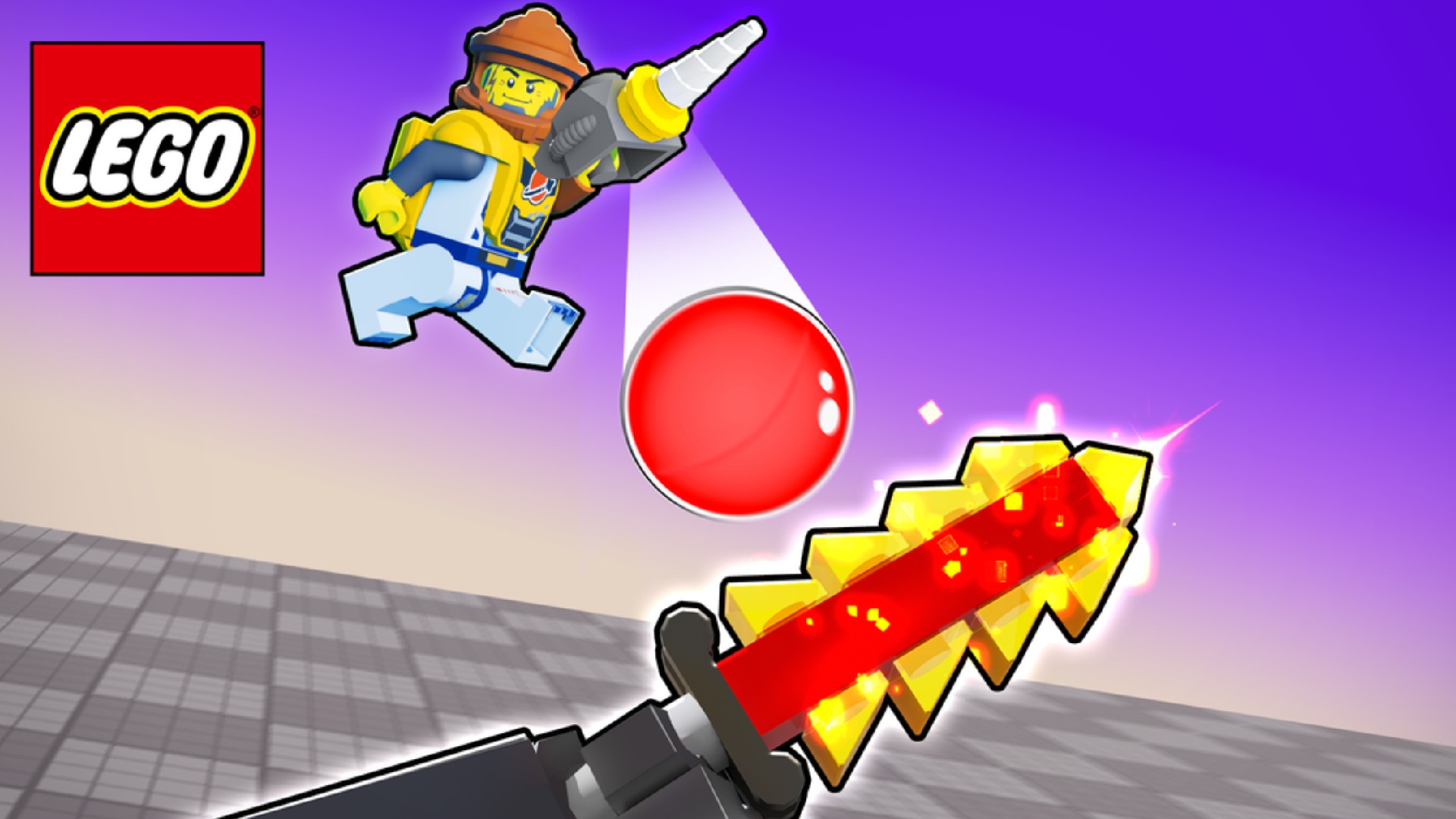
Jamey Stegmaier and Jakub Rozalski have followed up their hit board game Scythe with Expeditions, a new game that builds on Scythe’s alternate-history setting and mechanics while delivering an entirely different gameplay experience. Its strong horror theme, high quality components, and complex strategies make it a great addition to any collection and its randomized map provides the potential for even more replayability.
While Expeditions is set in the same “1920s but with mechs” world as Scythe, the game has ditched its focus on warfare and area control in favor of exploring and completing quests. Players randomly choose a starting mech, each with its own special ability and wild style like the Highlander that looks straight out of War of the Worlds or Odin’s Wrath, which is effectively a Viking longship on legs. For extra randomization, each player gets a different starting character and their paired animal companion. These three components will help determine your strategy for assembling the rest of your deck and accruing points.
In Expeditions, players are seeking to achieve glory through an expedition to Siberia, where a meteorite strike has unleashed ancient corruption, the flavor of which resembles Annihilation or Color Out of Space. You start in the relative safety of your basecamp, but soon venture further north by flipping tiles to reveal more of the map. This also reveals the tasks you must accomplish to learn the meteorite’s secrets and deal with the destruction it has caused. The art is wonderfully disturbing, from a Cthulthu-like creature frozen in ice to the corpse of an unfortunate explorer who died clutching their prize. Every piece is heavily detailed, with background art connecting to related tiles and cards.
Each tile can be activated to gather resources like additional cards or workers, which can be played with cards of the same color to fully activate their abilities. Tiles that start face down will also give players the opportunity to take additional actions when activated, typically permanently improving their engine by permanently moving cards from their deck to under their player board. The game comes with risers to make this process easier, which also helps reduce the amount of table space it requires.
These extra actions start covered with corruption tiles randomly doled out from a bag, with larger amounts the further north you go. Corruption must be vanquished by assembling a sufficient amount of guile and might, and playing a card that allows you to vanquish. While collecting corruption tiles earns you points, it costs so many resources that you’ll want to choose wisely and pursue easy targets where the revealed reward will quickly benefit you. There’s no real direct confrontation in Expeditions, but when possible you’ll want to wait for someone else to do the dirty work so you can move in and gain the benefits.
Expeditions is a game all about making tough choices to figure out the most efficient way to use your actions and resources. Throughout most of the game, you’ll only be able to take two actions per turn, alternating between moving, playing cards, and gathering resources. You need to take an action to refresh the cards and workers you’ve played, so you want to gather enough to avoid losing momentum. But the cards can also be converted into permanent upgrades, which are absolutely essential to gathering points that will let you win the game.
Another key component is completing quests, gathering cards that direct you to go to a specific tile and pay a cost — usually in guile and might — to earn a reward. These cards can also have powerful abilities when played, so they can be worth picking up even if you haven’t seen the location it’s guiding you to or if you never really intend to complete the quest at all. While they’re not quite as fun as the narrative encounter cards in Scythe, the evocative art goes a long way to telling a story.
Solving and vanquishing are made trickier by the fact that you can’t choose to do them at any time — you need to play specific cards that give you the ability to, sometimes with extra kickers that make the action more powerful. While the box says Expeditions takes 60-90 minutes to play, I’ve found games last significantly longer, since players really need to think hard and plan out their turns optimally or be left extremely frustrated by being unable to take effective actions.
Like with most engine building games, the key is knowing when to pivot strategies. Players each have four glory tokens that are placed when they complete specific objectives such as gathering seven corruption tokens or completing four quests. In a significant improvement from Scythe, these tokens aren’t placed automatically when the conditions are met but require taking an action to boast at one of only a few tiles. That means it’s almost impossible to place more than one in a turn and players always have a heads up when someone is getting close to placing their fourth token and initiating the last round of the game.
Not only does Expeditions lack a catch-up mechanic, placing some stars early will make your starting cards more powerful so you’ll gather more guile and might when you play them. Meteorites also stack with each other, and players who figure out a way to gather and meld them into their character board quickly can run away with the score.
Since there are so many permutations of the board and a huge deck of cards, you’ll need to come up with a strategy on the fly, but experience will help you get a sense of the best options. One way to do this is through the solo mode, which automates two mechs that explore the upper reaches of the board and take more powerful actions as the turns go on. It’s not as fun as playing with friends, but it does a good job of replicating the increasing momentum of player actions and takes much less time than a multiplayer game.
Where to Buy
See it at AmazonSee it at Stonemaier







